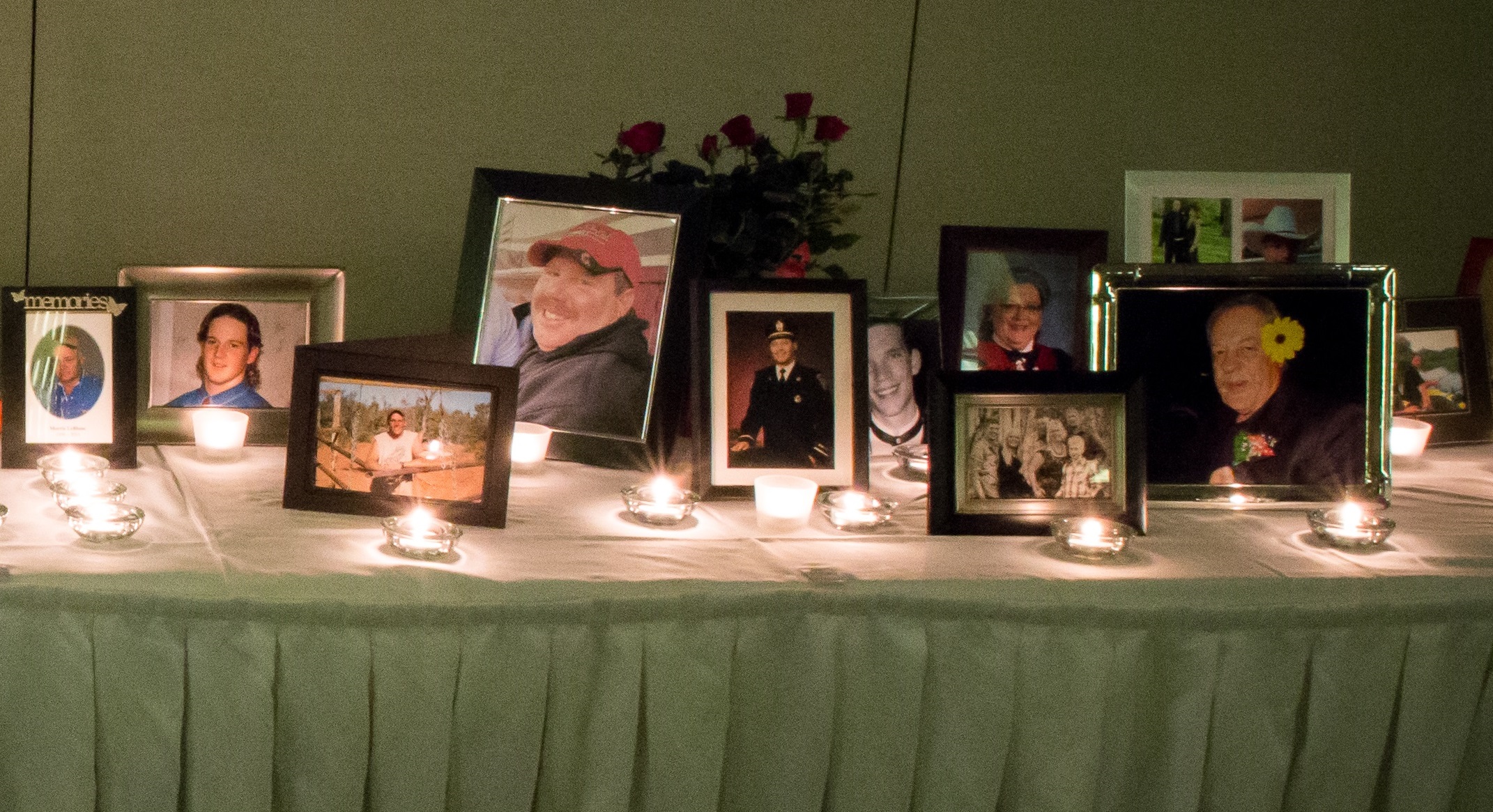
I’m sure all of us can think of a person who, despite some of life’s worst curve balls, carries a smile and looks to the future with positive anticipation. I am fascinated by those people. In fact, I’ve spent my entire career seeking out these individuals to be a partner, a collaborator or a member of the team. Why? It’s people like this who value a purpose bigger than themselves, are committed to making a difference, and energize everyone around them.
I thought that people with these characteristics were born this way. This is true, but I also discovered that this way of thinking and behaving can be learned.
In June of 2015, I attended my first Threads of Life Reflections ceremony and Family Forum at the Atlantica Hotel in Oak Island Nova Scotia. As a guest, I entered an entire ballroom filled with families and individuals who had experienced unspeakable tragedy. Seeing boxes of Kleenex at every table, I braced myself. After a few speeches and dinner, the room was darkened and the Mission Candle lit. Shortly thereafter, a projector accompanied by soft music illuminated the faces of your loved ones whose lives were cut short. One by one, you and your families also placed photos on a table at the front of the room and from the mission candle, lit your own candle in memory of your spouse, brother, sister, mother or father. As you shed tears, I did too, feeling your pain and my personal frustration that fatalities and injuries still occur because of unsafe work.
When the lights turned on, I didn’t know what to expect. What should I do? How could I comfort you? What did you want from me? Could I deliver? As it turned out, nothing was expected of me and the room quickly shifted to a state of excitement and hope for the future. An unquestionable sense of purpose permeated the room. I got to hear your stories of healing, your support for families experiencing recent tragedies, your tales of presentations in schools, workplaces large and small across the country, in order to prevent another workplace injury.
I lay awake late that night contemplating what had happened during and after the ceremony. For weeks and months to follow, I was filled with awe and deep respect for all of you so willing to share your deep personal pain in a way that was engaging and impactful, so that my family and many other families would not have to bear the same. How could you and your families at the forum who have lost so much be so optimistic and focused on the future? I also found myself asking why some individuals and families like you heal when a workplace tragedy occurs, while others despite their best efforts, are never able to progress towards wholistic emotional, spiritual, mental, financial and physical recovery?
I am not a clinician or a psychologist, but I have led teams and organizations that support workers and families experiencing workplace tragedies for over 20 years. I know the severity of an injury either directly or indirectly related to an accident is not a predictor for recovery. I have witnessed people with minor injuries become debilitated and I have been amazed by the unexpected healing of individuals and families who have experienced horrific tragedy. I will continue to advocate that positive clinical outcomes can be achieved when families and individuals have access to: evidence-based medicine; care plans consistent with injury type and phase of recovery; and multidisciplinary treatment when recovery is not on track. This formula for care is critical and foundational; however you and your families have shown me that there is more to health and full recovery than clinical treatment. I have met many of you and some of you have become a friend. It’s these relationships that give me some insight. You have taught me that Hope has a role to play. You have hope, and either on your own, or with the help of Threads of Life, you know how to practice it.
Loosely connected to the findings of Dr. Charles R. Snyder, who has done a lot of work in the field of psychology related to hope theory and health, I have observed four important behaviors fundamental to your Hope.
H-stands for your focus on a Higher Purpose or your desire to achieve something bigger than yourself or your current circumstances;
O-means that you are Open to Change and actively work at removing your negative personal beliefs or barriers to change;
P-indicates the importance you place on Persistence and the daily effort you need to move forward; and
E-expresses your commitment to Encouraging and supporting others.
You have taught me that each of these behaviors require action and commitment and are never complete. Ask yourself, what circumstance in your journey are you facing that require you to practice hope? Which characteristic do you need to work on?
Hope does not minimize a tragedy or a difficult circumstance. Hope helps us to find a path forward. Hope helps us achieve the healing we want and deserve.
A single Thread of Hope is a powerful thing. Thank you to the more than 2900 Threads of Life families for that life lesson.
- A community of support – on Kilimanjaro and for families after a workplace tragedy - December 15, 2022
- A single thread of hope is powerful - June 18, 2020

 Find Support
Find Support Donate
Donate